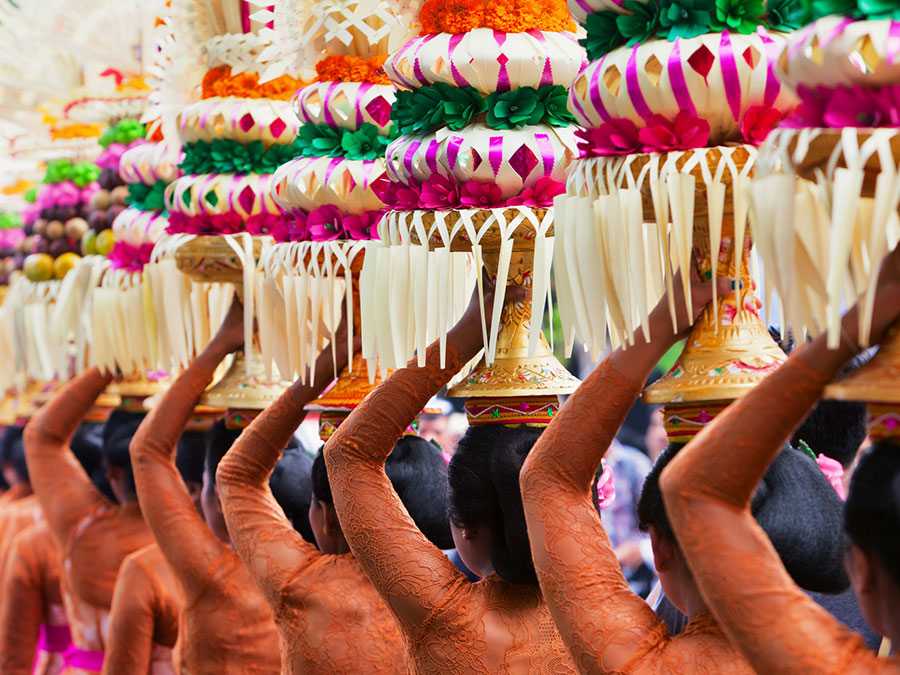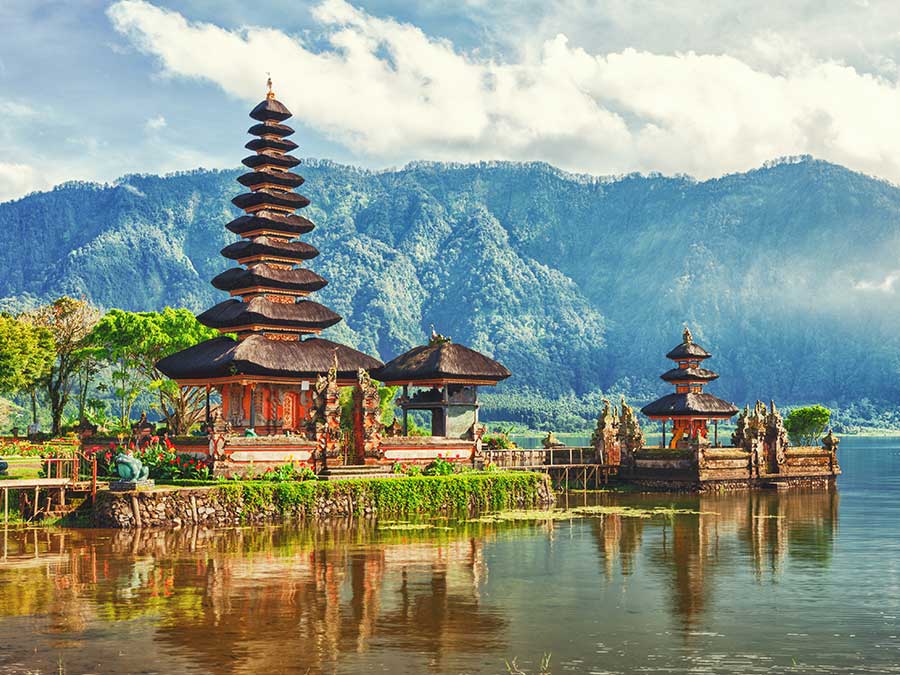
Top things to do in Bali
Unique experiences are at the heart of great travel. Many travellers are looking for a combination of luxury, relaxation, escape, adventure and authenticity.
Uluwatu Temple, Bukit Peninsula, Bali
While you’re beach hopping around Bali’s heavenly Bukit Peninsula, take some time to explore Uluwatu Temple. Perched on a clifftop and dedicated to the spirits of the sea, Uluwatu provides some pretty magical photo opportunities. Entry is reserved for Hindu worshippers only, but the views from the temple against a dramatic ocean backdrop should be incentive enough for visitors.
A word of warning: keep an eye out for resident monkeys. Their notoriously sticky fingers are likely to target anything within reach, including sunglasses, phones and jewellery.
Tegalalang Rice Terrace, Ubud, Bali
It may be more agriculture than architecture, but the breathtaking serenity of Telalalang Rice Terrace is something to behold. Balinese Hindus consider rice a gift of God – its growth and maintenance a manifestation of their central philosophy, ‘Tri Hita Karana’. Simply put, this is the idea that there are three interconnected causes of well-being: harmony among people, harmony with nature, and harmony with God.
Just walking through the tiered green paddies, you can grasp Tegalalang’s importance to Balinese culture. It’s a unique and powerful experience.
Goa Gajah (Elephant Cave), Bali
In a village near Ubud, with its intricately carved rock face, this cave looks like something from an Indiana Jones film set. Actually, it’s an ancient sacred site thought to date back to the 11th century. The doorway doubles as the gaping mouth of a carved demonic creature. Once you enter, the Goa Gajah is dotted with alcoves containing religious offerings.
The courtyard in front of the cave features stately fountains and bathing pools, which were only unearthed by Dutch archaeologists as recently as the 1950s.
Tanah Lot Temple, Bali
One of the most iconic temples in Bali has to be Tanah Lot. A rocky outcrop crowded with trees and small thatched hut roofs, it becomes surrounded by sea during high tide. This part-time island is situated just off the southwest coast of Bali.
Tanah Lot is one of Bali’s seven sea temples, which are thought to have been sequentially built to form a kind of chain of spiritual protection along the Balinese coastline. The walk to the Tanah Lot temple is something of a commercial gauntlet these days – less a contemplative pilgrimage than a bustling path of souvenir stalls and hawkers.
Visit during high tide to see the temple completely encircled by waves; or in low tide (around early evening) to get up close to the temple on foot.
Honourable mentions...
There are thousands of other temples to tempt tourists in Bali. In fact, you can barely step outside your hotel without finding something Instagram worthy. In the heart of Seminyak, there’s the distinctly orange Pura Petitenget, another of the aforementioned ‘sea temples’. Hiking fans may prefer the setting of Pura Besakih, a temple nestled on the volcanic slopes of Mount Agung in central Bali.
For something completely different, how about taking a dive to see the USS Liberty Shipwreck? It’s located on the northeastern coast of Bali, about a two-and-half-hour drive from Mount Agung. The wreck is only 30 metres offshore at Tulamben Beach, making it a relatively easy dive site with the opportunity to see incredible marine life in amongst the wreckage.
Much of the wreck’s appeal is in its story. The American ship was destroyed by a Japanese torpedo in World War II and left stranded on the beach at Tulamben. In 1963, Mount Agung erupted, pushing the ship into the water where it remains today.
Directly south of Tulamben, about an hour’s drive away on Bali’s eastern coast, is another architectural wonder – the Ujung Water Palace. This serene complex incorporates three large ponds, connected with bridges and dotted with pavilions and sculptures all surrounding the central building.
Unlike Bali’s many ancient temples, this palace only dates back to 1919. Even then it was largely destroyed by the Agung eruption of 1963 and has since been restored. Today, the elegant palace and gardens are a heady reminder of the royal family of Karangasem and the era of Bali’s ruling kingdoms.
The content of this article is general and provided for information purposes only. Southern Cross Travel Insurance (SCTI) doesn’t guarantee or warrant the accuracy, completeness or currency of the articles.
This article may contain hyperlinks to other websites owned or operated by third parties, or references to third party products or services. SCTI isn’t responsible for, and makes no recommendation about, the content or accuracy of any third party website, or for the suitability or performance of any product or service. The inclusion of a link in this article doesn’t imply that SCTI endorses the website or third party product/service.





